A decorated Army veteran, Timothy McVeigh carried out the Oklahoma City bombing in 1995 — the deadliest act of domestic terrorism ever seen in the United States.
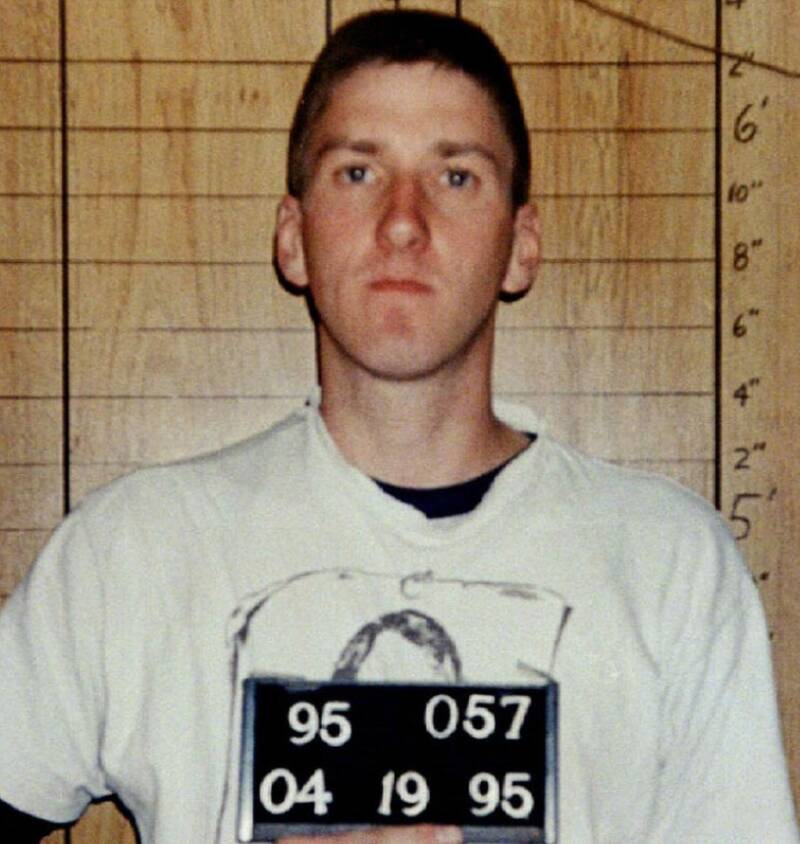
Public Domain Timothy McVeigh said he was the sole architect behind the Oklahoma City bombing of 1995.
As hundreds of employees settled into their workday on April 19, 1995, a powerful bomb suddenly exploded in front of the Alfred P. Murrah Federal Building in Oklahoma City, Oklahoma. The blast obliterated the face of the nine-story structure and killed 168 people, including 19 children.
“There was no warning,” one survivor later recalled. “It was totally, totally out of the blue.” But the Oklahoma City bombing had been planned over the course of several months by a domestic terrorist named Timothy McVeigh.
An Army veteran who found himself angry and adrift after the First Gulf War, McVeigh’s fury toward the federal government grew in the 1990s. Incensed by the Ruby Ridge standoff in 1992 and the Waco siege in 1993, McVeigh began to prepare an “action phase” to galvanize like-minded Americans.
Instead, the Oklahoma City bombing made Timothy McVeigh “the most hated man in America.” This is his disturbing true story.
The Boy From Buffalo Who Liked Shooting Guns
Born on April 23, 1968, Timothy McVeigh grew up in Pendleton, New York, a quiet suburb just outside of Buffalo. McVeigh was bright, though a middling student, and he became a child of divorce when his parents split.
By age 10, McVeigh started developing an interest in guns and survivalism. The Washington Post reported in 1995 that McVeigh often practiced target shooting with his .22-caliber rifle in the woods behind his house and that he eventually told a neighbor that he was stockpiling ammunition and supplies “in case of a nuclear attack or the communists took over the country.”
Though McVeigh briefly attended a local college and held a handful of jobs, nothing seemed to stick. But his interest in guns and survivalism remained strong. One coworker remembered McVeigh as “gun-obsessed.” And when McVeigh and a high school friend bought 10 acres of land near Buffalo, McVeigh later admitted that he’d hoped to build a survivalist bunker there.
An “Inspiration To Young Soldiers”
Timothy McVeigh remained adrift until 1988, when he decided to enlist in the Army at age 20. As a teenager, he’d had a fantasy of defending America from attack, and McVeigh excelled in basic training. According to a CNN article from 2001, he received the best score possible for infantry recruits.
In fact, McVeigh did so well on a live-fire test that he was invited to try out for Special Forces. But then, the First Gulf War began in August 1990.
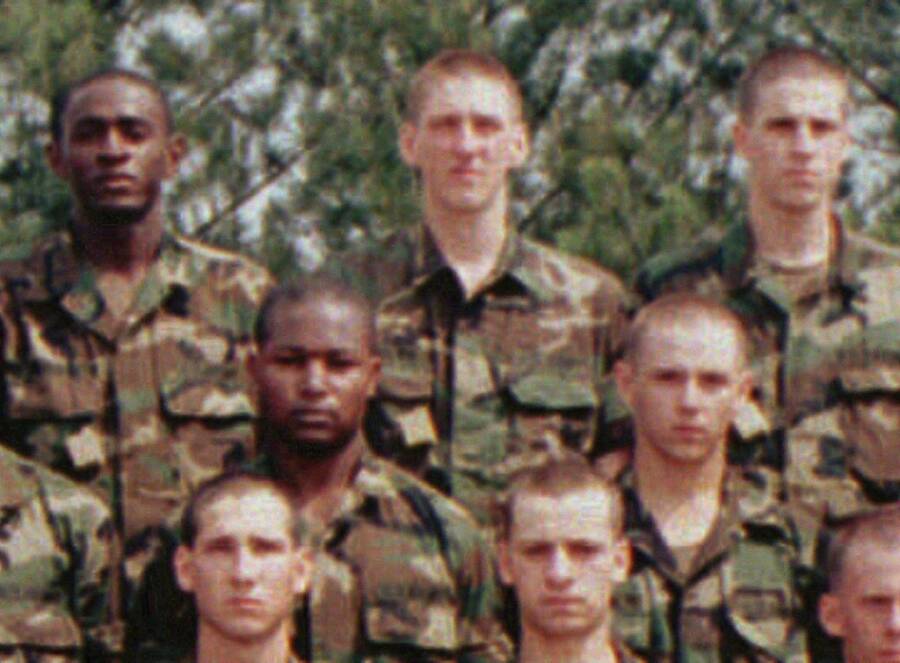
PBSTimothy McVeigh thrived in the U.S. Army, but he came home from the First Gulf War drained and disillusioned.
Shooting guns in the woods was one thing; actual war was quite another. During his first mission, McVeigh told a fellow soldier, “I think we’re all going to die.” And even though he was widely praised for shooting an Iraqi soldier from 2,000 yards away, McVeigh found little to celebrate after the man’s death. “Because of [Saddam Hussein], I killed a man who didn’t want to fight us, but was forced to,” he later lamented to a friend.
He earned numerous medals during his service, including a Bronze Star, but he still came home drained and disillusioned, a feeling that only deepened when McVeigh failed in his quest to join the Special Forces.
“You’ve seen the extremes, experienced the ultimate highs, lows, and realities,” McVeigh told his biographers Lou Michel and Dan Herbeck, who wrote American Terrorist: Timothy McVeigh and the Oklahoma City Bombing.
After that, McVeigh continued: “Who gives a sh*t about conversation about the weather, or who’s late for work, or who stubbed their toe? The daily grind, all of a sudden, has gotten much more intolerable.”
The Radicalization Of Timothy McVeigh
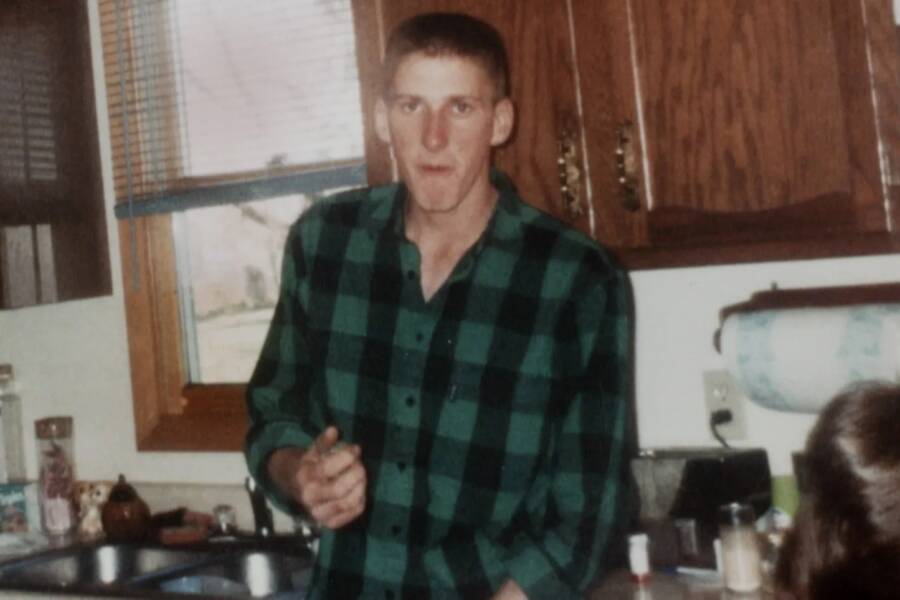
PBSTimothy McVeigh was increasingly radicalized by events like the Ruby Ridge standoff and the Waco siege.
Out of the Army, Timothy McVeigh found himself adrift again. He looked for belonging in groups like the KKK (he told Michel and Herbeck that they were too focused on race and not enough on the Second Amendment) and struggled to adjust to civilian life. McVeigh also became more vocal about his political beliefs and his growing rage against the federal government.
In letters he wrote to the Lockport Union-Sun and Journal in February and March 1992, he vented about the rising crime rate, “cataclysmic” taxes, self-interested politicians, and the disappearance of the “American Dream.”
“AMERICA IS IN DECLINE,” McVeigh wrote. “Do we have to shed blood to reform the current system? I hope it doesn’t come to that! But it might.”
Just months after McVeigh wrote his letters, his worst suspicions about the federal government seemed to come true during the Ruby Ridge siege. In August 1992, federal agents besieged self-proclaimed white separatist Randy Weaver (who’d been caught illegally selling weapons) and his family on Ruby Ridge in Idaho, resulting in the deaths of Weaver’s wife and teenage son.
After Ruby Ridge, McVeigh hit the road. While looking for a “free state” to live in, McVeigh spent time on the gun show circuit, selling items like The Turner Diaries, a novel beloved by neo-Nazis about a man who blows up the FBI building in Washington, D.C. When federal agents tried to raid the Branch Davidian compound in Waco, Texas, in February 1993, McVeigh made his way to Waco to sell bumper stickers in support of the Branch Davidians.
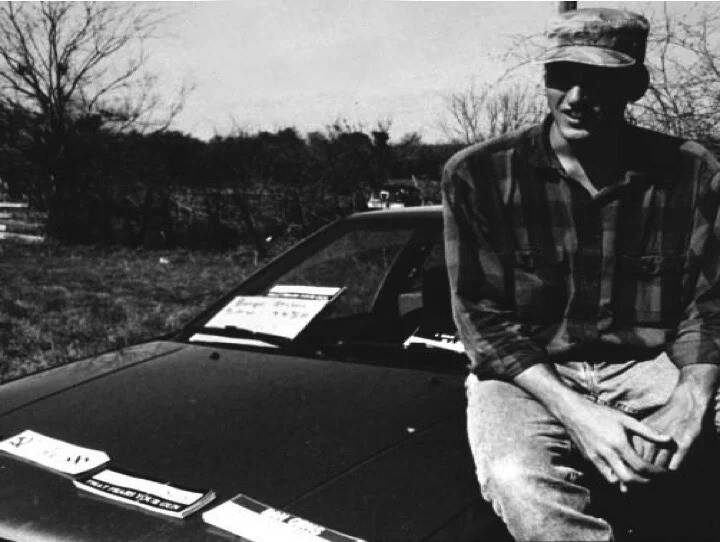
Federal Bureau of InvestigationDrifting from place to place on the gun show circuit, Timothy McVeigh made his way to Waco, Texas in 1993 to show support for the Branch Davidians during their standoff with federal agents.
Then, on April 19th, the FBI stormed the compound. Seventy-six Branch Davidians were killed, including their leader David Koresh and 25 children.
Timothy McVeigh was incensed. He decided to take action.
“I didn’t define the rules of engagement in this conflict,” he later said. “The rules, if not written down, are defined by the aggressor. It was brutal, no holds barred. Women and children were killed at Waco and Ruby Ridge. You put back in [the government’s] faces exactly what they’re giving out.”
McVeigh began to develop a plan, eventually deciding that April 19th was a significant date. It was the date of both the Waco massacre and the Battle of Lexington and Concord, which led to the American Revolution in 1775.
And it was the date he chose for the Oklahoma City bombing.
Inside The Oklahoma City Bombing
With the help of an accomplice named Terry Nichols, a friend who he’d met in the Army, Timothy McVeigh planned the Oklahoma City bombing over the course of several months. McVeigh also shared his plans with his friend Michael Fortier and Fortier’s wife Lori, demonstrating with soup cans in the couple’s kitchen how he would destroy the Alfred P. Murrah Federal Building.
In a letter published by The Guardian in 2001, McVeigh explained why he chose to target the Alfred P. Murrah Federal Building. He claimed that the attack on the building was a “retaliatory strike” for the violence committed by federal agents, “including,” McVeigh wrote, “but not limited to, Waco.”
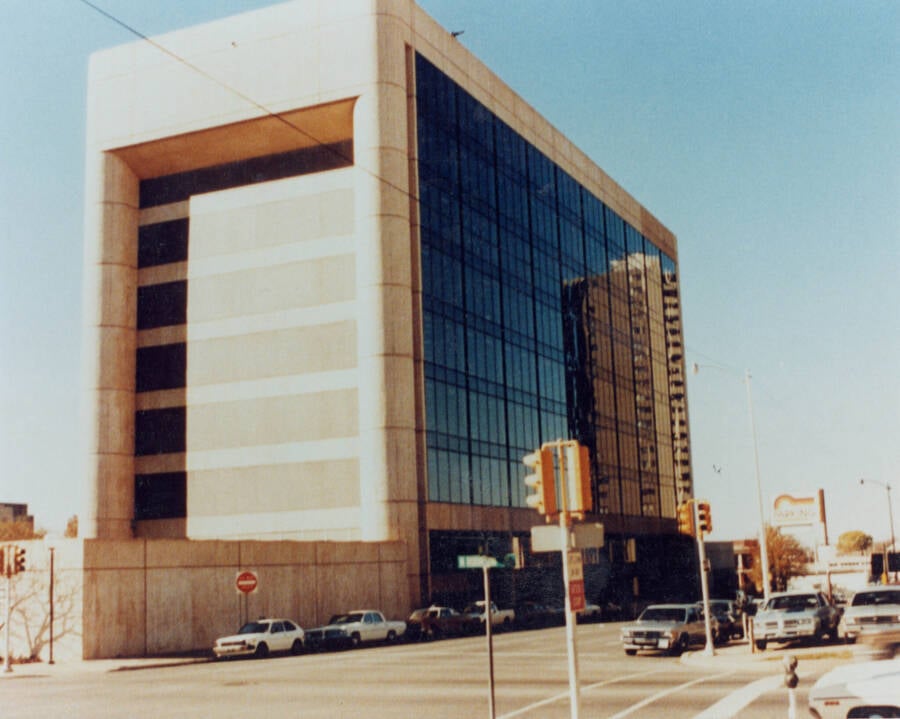
Oklahoma City National Memorial MuseumThe Alfred P. Murrah Federal Building before the Oklahoma City bombing.
He also believed that killing a lot of people in a federal building was the only way that he would be able to get his message across.
“From a military perspective, to get a message across, you need to hurt them where they hurt the most,” Timothy McVeigh said in a jailhouse interview, which was included in the PBS documentary Oklahoma City (2017). “The only way they’re going to feel something and the only way they’re going to get the message is with a body count.”
He and Nichols slowly accumulated the supplies they’d need to build a bomb, including agricultural fertilizer and diesel fuel. And on April 19, 1995, Timothy McVeigh parked a rented Ryder truck containing the 7,000-pound bomb in front of the Alfred P. Murrah Federal Building in Oklahoma City.
It was just before 9 a.m. on a Wednesday, and the building — which contained offices for several federal agencies, including the Bureau of Alcohol, Tobacco and Firearms, the Drug Enforcement Administration, U.S. Department of Defense, and more — buzzed with some 600 federal and contract workers as well as about 250 visitors.
There were also 21 children in the building’s daycare center. (McVeigh later called them “collateral damage,” but he claimed that he might have chosen a different target had he known about the daycare. However, some believe that he was well aware of its presence in the building.)
McVeigh got out of the car, locked it, and ignited two timed fuses.
He was two blocks away when the bomb exploded at 9:02 a.m., with enough force to lift McVeigh off his feet. But he didn’t turn around.
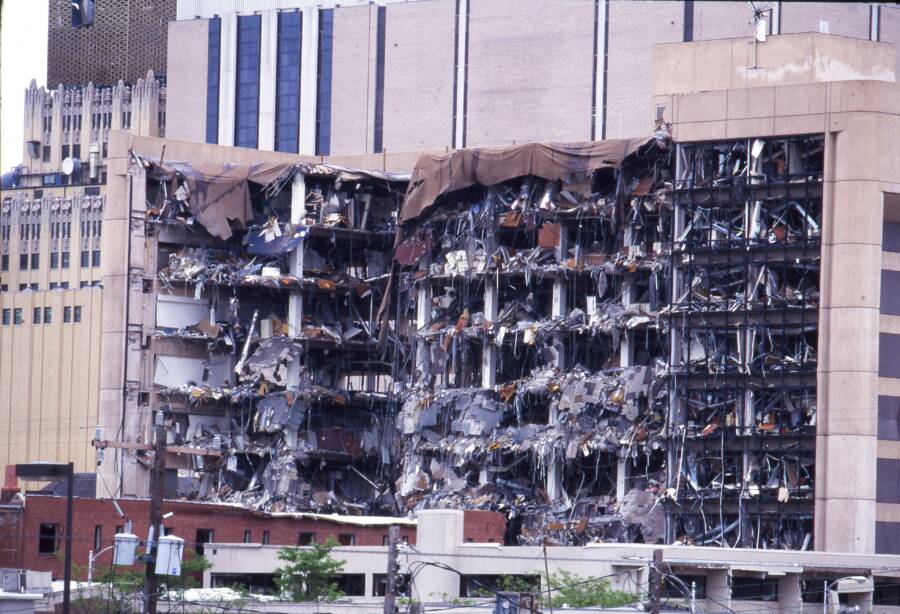
Bob Daemmrich/Alamy Stock PhotoThe Oklahoma City bombing killed 168 people, including 19 children. It also injured almost 700 people.
“What the U.S. government did at Waco and Ruby Ridge was dirty,” McVeigh said. “And I gave dirty back to them at Oklahoma City.”
Meanwhile, his bomb had ripped the face off of the Alfred P. Murrah Federal Building, killing dozens and leaving hundreds of people scrambling to survive.
“It blew us out of our chairs,” Sharon Paulsen, a claims representative for the Social Security Administration, later recalled, according to The Oklahoman. “It felt like the world just fell in on us.”
“I thank the Lord I wasn’t at my desk at the time because that portion of the building is gone,” Capt. Henderson Baker II, a U.S. recruiting battalion captain who was on the fourth floor, recounted to The Oklahoman. “We were standing talking to each other and all of a sudden… I didn’t know what was going on. I just didn’t know what was going on. I just didn’t know. It was dark, black, and I was falling. I landed on the first floor.”
The Oklahoma City bombing ultimately killed 168 people, including 19 children. (Of the 21 in the daycare, only six survived.) It came just two years after the World Trade Center bombing of 1993, and many initially assumed that the latest attack had also been carried out by Middle Eastern terrorists.
But in reality, investigators would soon discover that they were dealing with a terrorist from much closer to home.
The Arrest And Execution Of Timothy McVeigh
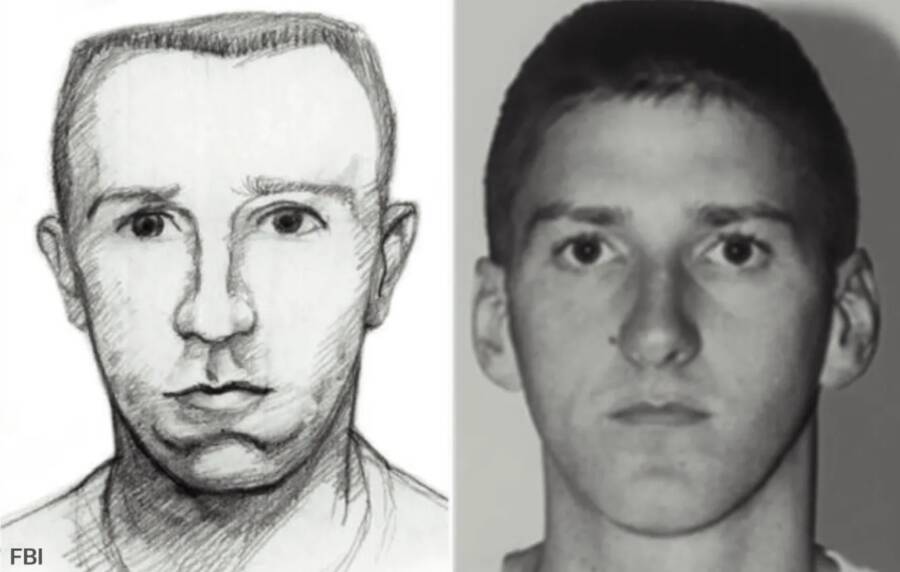
Federal Bureau of InvestigationThe police sketch of Timothy McVeigh. Investigators found him just a couple of days after the Oklahoma City bombing.
According to the FBI, investigators quickly zeroed in on the remains of a rented Ryder truck as the nucleus of the explosion. Authorities were then able to identify a vehicle identification number on its rear axle, which they quickly traced to a body shop in Junction City, Kansas.
There, body shop workers and local hotel employees helped the FBI track down the name of their suspect: Timothy McVeigh.
After that, it didn’t take much to find McVeigh. He was actually already in jail — because he’d been pulled over just 90 minutes after the bombing since his getaway car was missing its license plate. He also had a concealed weapon in the vehicle. Agents found more and more evidence linking McVeigh to the crime, including traces of the chemicals used in the explosion on McVeigh’s clothes. They also learned about his extremist views.
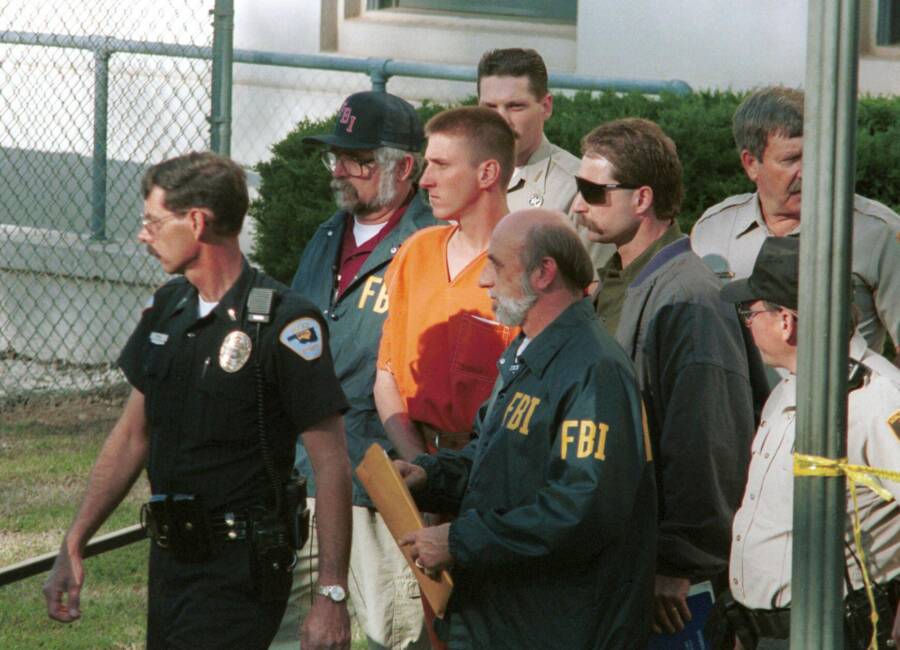
ZUMA Press, Inc./Alamy Stock PhotoTimothy McVeigh was pulled over just 90 minutes after the Oklahoma City bombing, and federal agents were quickly able to connect him to the terrorist attack.
At his trial in 1997, Timothy McVeigh was found guilty and later sentenced to death for the Oklahoma City bombing. His accomplice Terry Nichols was sentenced to life in prison without parole for conspiring to use a weapon of mass destruction, and Michael Fortier was sentenced to 12 years in prison for failing to inform authorities about the plot. (Michael’s wife Lori was never prosecuted due to a provision of Michael’s plea bargain.)
Though some people were skeptical that McVeigh had carried out such a deadly terrorist attack mostly on his own, with the help of just a few accomplices, he insisted that he was the sole architect of the bombing: “You can’t handle the truth… Because the truth is, I blew up the Murrah Building, and isn’t it kind of scary that one man could wreak this kind of hell?”
On June 11, 2001, Timothy McVeigh was executed by lethal injection at age 33. He had no last words, but he did give prison officials a 19th-century poem by William Ernest Henley, which includes the lines: “My head is bloody, but unbowed” and “I am the master of my fate: I am the captain of my soul.”
At 8:14 a.m. that day, Timothy McVeigh died. But for some who lost loved ones in the Oklahoma City bombing, his execution wasn’t enough.
“They should put him in a building that they’re going to implode and chain him to it somewhere and then let me have the detonator — let me do the job at my own time,” Roy Sells, whose wife died in the Oklahoma City bombing, told CNN. “That’s the way he took their lives… the crushing of little children, grandpas, husbands and wives and everything else. He is getting away really easy compared to what those 168 people had to go through.”
After reading about Timothy McVeigh, the terrorist behind the Oklahoma City bombing, discover the story of the Wall Street bombing of 1920, the first major terrorist attack in New York City. Or, look through these heart-wrenching photos that capture the devastation of 9/11.





